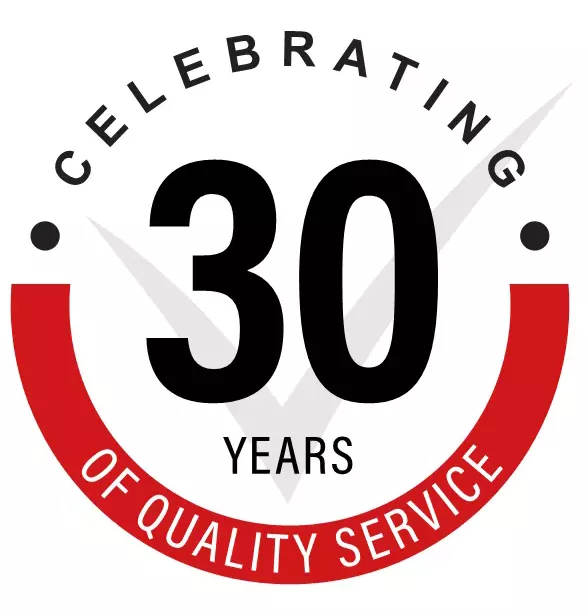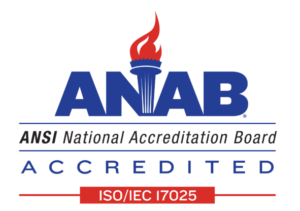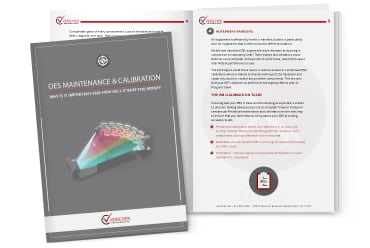Optical Emission Spectroscopy (OES) is a well-established analytical technique used to determine the elemental composition of various metal alloys. This method involves exciting atoms in a sample to a high-energy state using a spark or arc. When these excited atoms return to a lower energy state, they emit light at specific wavelengths that are characteristic of particular elements. By measuring the intensity of this light using a spectrometer, OES can accurately determine the concentration of elements within the sample. This precision makes OES a critical tool in metallurgy, where understanding the exact composition of alloys is essential for ensuring material quality and performance.
The role of high-purity argon in OES is of paramount importance. Argon, a noble gas, is used as the plasma gas in OES testing. Its high-purity is crucial because any impurities in the argon can lead to inaccurate readings or interference in the emission spectra. High-purity argon provides a stable and consistent environment for the plasma, ensuring that the emission lines from the sample are not contaminated or altered by other elements. This stability is essential for achieving the high levels of accuracy and precision required in OES analysis. The purity of argon affects not just the quality of the test results but also the reliability and repeatability of the measurements, which are critical factors in quality control and material certification processes.
The use of high-purity argon in OES is critical in minimizing background noise and enhancing the sensitivity of the detection. Impurities in the argon can generate their own emission lines or alter the intensity of the sample’s lines, leading to erroneous conclusions about the sample’s composition. High-purity argon helps to ensure that the light emitted from the sample is as clear and unobstructed as possible, allowing for more precise measurements. This level of precision is especially important in applications where the accurate determination of trace elements is necessary, such as in the aerospace, oilfield, recycling, and automotive industries.
The Role of Argon in Optical Emission Spectroscopy
Argon plays a pivotal role in Optical Emission Spectroscopy (OES) as a carrier gas, a position that is fundamental to the accuracy and efficiency of the spectroscopic analysis. In OES, a sample material is excited using a source such as a spark or arc, causing its atoms to emit light at characteristic wavelengths. Argon is chosen for this purpose because of its inert nature; being a noble gas, it does not react with the sample or interfere with the emission spectrum. This inertness ensures that the atomic emission from the sample remains pure and unaltered, allowing for a more accurate analysis of the elemental composition.
The use of argon in OES is particularly significant when considering the sensitivity of the technique. As a carrier gas, argon aids in stabilizing the plasma state during the excitation process. This stability is crucial for consistent and repeatable measurements. The uniformity provided by argon allows for a clearer distinction of the spectral lines, which is essential for the precise identification and quantification of elements within a sample. Furthermore, the purity of argon as a carrier gas is a vital factor. Any impurities in the argon could lead to the introduction of extraneous spectral lines or the alteration of the sample’s emission spectrum, thereby compromising the accuracy of the analysis. Therefore, high-purity argon is not just a preference but a necessity for reliable OES testing.
Impact of Argon Purity on OES Accuracy
The purity of argon used in Optical Emission Spectroscopy (OES) is a crucial factor directly impacting the accuracy of elemental analysis. OES is a technique that relies on the quantification of light emitted from a sample when excited to high energy states. Argon, as an inert carrier gas in this process, must be of high-purity to ensure that the spectral readings are exclusively from the sample with no extraneous interference. Impurities in argon, even in minimal amounts, can introduce unwanted spectral lines or alter the intensity of the emission from the sample. These alterations can lead to significant errors in identifying and quantifying elements, especially trace elements that are present in small concentrations. The purity of argon is measured in terms of the presence of other gases like oxygen, nitrogen, water vapor, and hydrocarbons. Even trace amounts of these contaminants can lead to false peaks or suppression of true signals in the spectrum, thereby skewing the analysis.
The role of argon purity becomes even more critical when considering the sensitivity and precision required in certain industrial applications. For instance, in the aerospace and automotive industries, the accurate determination of trace elements in metal alloys is paramount for material integrity and performance. In such scenarios, the purity of argon must be exceptionally high, often 99.999% pure or better, known as “ultra-high-purity” argon. At this level of purity, the risk of spectral interference from argon itself is minimized, leading to more reliable and accurate measurements. The high-purity of argon ensures that the baseline of the spectral readings is stable and consistent, a key factor in OES where even small variations can lead to erroneous conclusions about the sample’s composition. This consistency is crucial not only for the accuracy of individual measurements but also for the repeatability of tests, ensuring that results are reliable over time and across different samples.
Argon Purity Levels and Their Applications
In advanced applications where gas purity is a crucial parameter, understanding the specific roles and uses of different argon purity levels is essential. Argon, a noble gas known for its inertness, is widely utilized in various scientific and industrial fields. The purity of argon is typically denoted by grades such as 5.0 or 6.0, which correspond to the number of nines in the percentage purity. This paper aims to elucidate the distinct uses and significance of 5.0 and 6.0 purity levels of argon in relevant applications.
5.0 Purity Argon
Grade 5.0 argon, which signifies a purity level of 99.999%, is commonly employed in applications where high but not ultra-high-purity is required. This grade of argon is often used in standard laboratory settings for inert atmospheres, especially in applications like gas chromatography and spectrophotometry. Its relative affordability compared to higher-purity gases makes it a practical choice for routine experiments where the presence of trace impurities has a minimal impact on the experimental outcome. However, it’s essential to acknowledge that grade 5.0 may still contain minute levels of impurities such as oxygen, nitrogen, and water vapor, which could be detrimental in more sensitive applications.
6.0 Purity Argon
Advancing to grade 6.0, which indicates a purity level of 99.9999%, this grade of argon finds its use in more stringent and sensitive applications. A notable area of application is in the detection of trace levels of nitrogen. In such cases, the presence of even trace amounts of impurities can significantly skew results, hence the necessity for a higher purity argon. The 6.0 grade ensures minimal interference from other gases, particularly in techniques like mass spectrometry or advanced spectroscopy methods where the detection of minute quantities of substances is critical. The heightened purity level significantly reduces background noise, thereby enhancing the sensitivity and accuracy of measurements.
Benefits & Costs of High-Purity Argon in Metal and Alloy Analysis
Utilizing high-purity argon in metal and alloy analysis ensures a high level of accuracy and repeatability in results. This precision reduces the need for repeated analyses, saving both time and resources. In industries where material quality is critical, such as aerospace and automotive manufacturing, the cost of failure due to material flaws can be exorbitant. Therefore, the initial higher cost of high-purity argon is offset by the assurance of accurate compositional analysis, which is paramount in preventing costly material failures or product recalls.
Hidden Costs of Poor Quality Argon
On the other hand, the use of argon of lower purity may introduce impurities into the analysis, leading to inaccurate results. These inaccuracies can manifest in the misidentification of alloy compositions or failure to detect trace elements, which are critical in certain applications. The costs associated with such inaccuracies can be substantial, including additional testing, quality control failures, and even material rejection. In critical applications, where the exact composition of alloys determines the suitability of the material for specific uses, the consequences of inaccurate analysis due to poor quality argon can be financially significant and detrimental to the reputation of the manufacturing entity.
Enhancing Sensitivity in OES with High-Purity Argon
High-purity argon, with minimal impurities, ensures that the plasma generated in OES is free from contaminants that could otherwise interfere with the emission spectrum. For elements like Carbon and Sulfur, which have relatively weak emission lines, the presence of impurities can significantly mask or alter their signals. High-purity argon helps in producing a clean and distinct spectrum, where the emission lines of these trace elements are clearly discernible. This clarity is crucial for accurate quantification, as even slight interferences can lead to substantial errors in low-concentration measurements. Furthermore, the consistency of the argon environment enhances the reproducibility of the results, a vital factor in trace element analysis.
Impact on Detection of Specific Elements
In the detection of elements like Phosphorus and Nitrogen, the high-purity of argon plays a dual role. Firstly, it reduces the background noise in the spectral analysis, allowing for lower detection limits. This is particularly important for elements like Nitrogen, where the detection of minute quantities can be essential in certain alloys. Secondly, the inert nature of argon ensures that these elements do not form unstable compounds during the analysis, which could otherwise lead to erroneous readings or loss of sensitivity. As a result, high-purity argon directly contributes to the enhanced sensitivity of OES in detecting and quantifying these critical trace elements.
Consistency and Reliability in OES Results: The Role of Argon Purity
Argon purity directly affects the baseline stability in spectral analysis. The presence of impurities in argon can introduce noise and fluctuations in the baseline, which are quantitatively manifested as variations in the standard deviation of the baseline signal. High-purity argon, with minimal impurities, ensures a stable and low-noise baseline, which is critical for accurate peak identification and integration. This stability can be quantitatively measured by calculating the coefficient of variation (CV) of the baseline signal. A lower CV indicates higher baseline stability, directly correlating to the purity of the argon used.
Enhancing Signal-to-Noise Ratio (SNR)
The signal-to-noise ratio (SNR) is a crucial quantitative parameter in OES. High-purity argon contributes to an enhanced SNR by minimizing the background spectral noise. The SNR is calculated as the ratio of the mean peak intensity to the standard deviation of the noise. Higher argon purity reduces the standard deviation of the noise, thereby increasing the SNR. This increase is vital for detecting and quantifying elements at trace levels, as it directly impacts the limit of detection (LOD) and limit of quantification (LOQ) in a mathematical model.
Statistical Repeatability & Reliability
Repeatability in OES results is a measure of how consistently an analysis can be replicated under the same conditions. Argon purity influences repeatability by affecting the precision of the measurements. Statistically, this can be observed through the calculation of relative standard deviation (RSD) across multiple measurements. High-purity argon leads to lower RSD values, indicating higher precision and repeatability. This statistical consistency is fundamental for reliable elemental analysis, especially in quality control and regulatory compliance scenarios.
Summary: Maintaining Reliable & Reproducible Metal Analysis Results with High-purity Argon
The utilization of high-purity argon in Optical Emission Spectroscopy (OES) emerges as a pivotal factor in ensuring reliable and reproducible metal analysis results. This encapsulates both the scientific and economic benefits derived from the application of high-purity argon in OES testing, underscoring its critical role in metallurgical analysis.
Scientifically, high-purity argon, characterized by minimal contamination and inertness, significantly enhances the accuracy of OES. This enhancement is primarily due to the reduction of interference in the emission spectra. Argon’s high-purity minimizes the presence of extraneous signals or noise, thereby refining the detection and quantification of elemental compositions within metal samples. Particularly in the detection of trace elements, high-purity argon contributes to lower detection limits and increased sensitivity. This is crucial in applications where even marginal variations in elemental composition can drastically affect the properties and suitability of materials.
From a reproducibility standpoint, high-purity argon facilitates consistency in OES measurements. This consistency is not just qualitative but quantifiable, as evidenced by reduced variability in repeated measurements across various sample batches. Such reproducibility is essential in sectors requiring stringent quality control measures and adherence to regulatory standards. It ensures that analytical results are dependable and can be replicated under similar conditions, a cornerstone requirement in industrial quality assurance processes.
Economically, while high-purity argon incurs a higher initial cost compared to lower-purity alternatives, the long-term financial benefits are substantial. The accuracy and reliability afforded by high-purity argon reduce the need for repetitive testing and mitigate the risk of erroneous analyses, which can lead to costly material failures or non-compliance issues. In industries such as aerospace, automotive, and construction, where material integrity is paramount, the economic implications of accurate metal analysis are profound. The use of high-purity argon, therefore, translates into cost savings by preventing expensive material rejections, recalls, or failures.
In conclusion, the deployment of high-purity argon in OES testing is a judicious integration of scientific accuracy and economic efficiency. It not only enhances the integrity of metal analysis results but also aligns with the economic rationale of reducing long-term costs and risks associated with metallurgical quality control. The importance of high-purity argon in achieving reliable and reproducible results in metal analysis is thus established as both a scientific necessity and an economic strategy.



 OES MAINTENANCE & CALIBRATION:
OES MAINTENANCE & CALIBRATION: